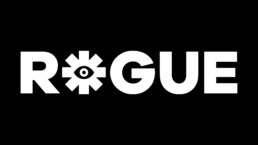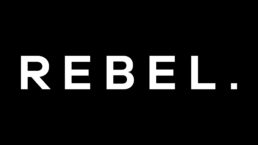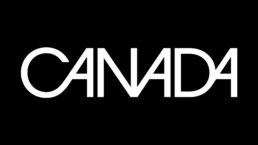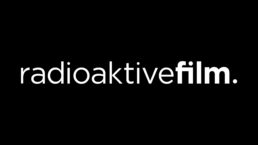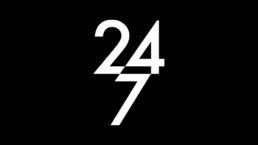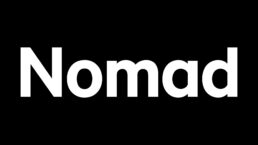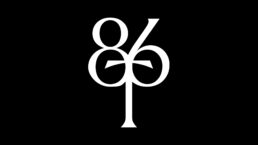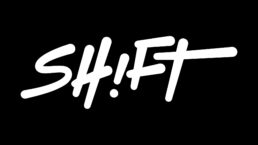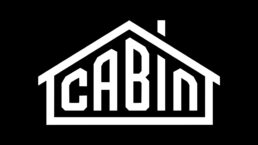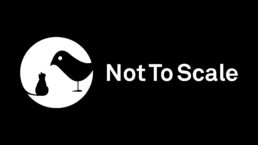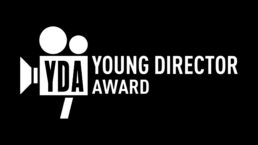From her time as a designer in NYC in the 80s through to a career reboot in journalism that came with a move to Paris, Diane Pernet has lived and breathed fashion across media for over three decades. Her A Shaded View On Fashion Film is the most highly regarded festival of its kind and has set the gold standard for recognising the convergence of film and fashion since 2008 – even before the term ‘fashion film’ had seeped into popular conscious.
With just 24 hours left to submit entries for the 5th ASVOFF festival being held at The Pompidou Center (and we do urge you to enter) we spoke with Diane from New York Fashion Week to soak up her insights.
Your education was actually in Documentary Film before you went into fashion – how did that move from film making to designing come about and what do you think you learnt from the first discipline that translated into the second?
Although I chose to get my degree in filmmaking, I’ve always really had two passions: fashion and film. If I’m really honest with myself, I think that the reason I didn’t end up in the film industry was that, back when I finished college, I just wasn’t really into teamwork. I wanted to control everything that I was creating. And since films are almost inevitably reliant on a lot of collaboration, it didn’t seem possible that I could realize any kind of pure vision I might have had for a particular film. So, I gradually found myself getting into reportage photography where I could shoot, print and do it all myself.
Intimacy was a recurring theme in my photography, which I tried to capture it in very different circumstances. There were photos I took of tender moments of my husband at home but there were also portraits of residents in an insane asylum where my sister worked. I did enjoy being a photographer but, at a certain point, I just decided I wanted to do something else. I suppose it shouldn’t have come as a surprise that this ‘something else’ ended up being design since my other love was fashion.
I went to school for nine months at Parsons and FIT and then I quit. It just felt right and I opened up a brand of my own – although it certainly wasn’t as quick or simple as that might sound as I say it now. I guess what film taught me that was the most useful and relevant to a burgeoning career in fashion was that, in fashion just like in film, you need a truly unique aesthetic, approach and a signature in order to make it. Or to make it worthwhile for anyone that matter.
Tell us about those days as a designer in NY in the 80s – did you socialise with Stephen Sprouse and his set? Who was in your network? And how would you describe your own design work in that period?
I lived on West 11th Street between Bleecker and Hudson. I used to have a tiny studio overlooking the park. Actually it’s right next door to what is now Book Marc. In those days, I was one of the designers in what people were calling the New York avant-garde fashion scene. We all emerged out of the long shadow of 7th Avenue. I mostly did things my own way, showing in some unusual locations around the city. I remember the industry bible WWD calling me a downtown vamp for one of their cover shoots but, in the same article, calling my clothes seductively stark and the work of a linearist. I suppose I was always hard to pigeonhole.
It’s funny you should ask about the 80s. I’m currently working on my autobiography so I’ve been asking friends from back then who I’m still friends with now to send me a few lines about what they remember. The stylist Christine de Lassus, who I know from my very first fashion show, just wrote me back some very sweet lines that also helped put things into perspective in retrospect. I think it would be better if I let someone like her do the talking instead of me trying to describe my own designs. What she said was, ‘Your clothes were exquisite like French couture to me — but not in the stiff French way. Your elegance was always with a zest of mad unexpectedness. There was nothing similar in New York at the time coming from an American designer. After meeting in my first year in New York Charles James, Antonio Lopez and Juan, then you – so exotic as you were – it was the confirmation I needed. That I had left everything behind in Paris for the right reason. New York was the place to be. And New Yorkers rocked.’
It did sort of feel like we were all touched by the creative buzz of a special era. But, you know, that scene was like any other scene that the media lumps together. So as far as my social life was concerned, there were some contemporaries who you hang out with and others who you don’t. Who I remember well from that set is Isabel Toledo, David Cameron, Angel Estrada, Norbury Osuna, Robert Molnar who was with Fred Snyder from the B-52’s, and of course Stephen Sprouse and Andre Walker. I still always get a kick when I run into Andre Walker. Robert Molnar looks younger every year. As for Isabel Toledo and Ruben, they are simply ageless and timeless.
Yes, I liked Stephen Sprouse but we weren’t best friends or anything like that. I do remember that he’d kindly carry my garment bags back to my atelier for me in the West Village whenever we were in the same ’emerging talents’ photo shoot. Sprouse was a very cool guy, may he rest in peace. Whenever I think back to that era, I also think of people like Benjamin Liu, who produced my last few shows in New York. He was the right hand of Andy Warhol for about 17 years. Edwige was a friend and she used to also go out with one of my models. I did go to clubs – it was certainly the time to do it after all – but I preferred dinner with friends and a good film.
I also knew people like Keith Haring – very cool as well but, again, not best friends. Anita Sarko was the DJ for my shows and Anna Sui was a friend. With Anna was Steven Meisel –they were dear friends. I met Mario Testino early on in his career when he was seeing Walt Cessna. And back when Anna Wintour was still climbing her way to the top of the publishing world, she styled an editorial featuring my label which was pretty underground for the time. For another shoot, I cast a very young Naomi Campbell still jetlagged from London where she’d been scouted not long before.
What was the catalyst for your move to Paris and the shift of career into fashion reportage? And what have been your most inspiring and memorable moments across your time at Joyce, Elle and Vogue?
By the end of the 1980s, New York was changing beyond recognition – and not for the better. The city had become very dark and more than a little like Bladerunner. I knew it was time for me to go. Paris seemed the obvious choice when I eventually did leave in 1990.
Paris was capital of fashion and I also wanted to live somewhere I could feel comfortable walking the streets again. I wore many hats when I first set up in Paris. I was a costume designer for a few films, one by Amos Gitai, which wasn’t the best experience but I did meet some really interesting people in doing it – like the German actress Hanna Schygulla. I was a huge fan of Rainer Werner Fassbinder and I’d seen all of his films so meeting Hannah was straight out of a dream for someone like me. Also, the lighting director for the film was Henri Alekan, who was 87 and had worked with Jean Cocteau. So the idea of that was heavenly and it also seemed like the entire cast from Peter Brook’s Mahabharata was in the film. But the work itself was deadly boring and Amos was anything but heavenly to work with.
Journalism was something that I’d never thought about until Tiffany Godoy asked me to write a piece for the magazine she was editing at the time in Tokyo called Composite. Soon I found myself dishing up styling advice on Elle.com as ‘Dr. Diane’, then on Vogueparis.fr before it became Vogue.fr. Tina Isaac had been my editor at Elle.com and she set up Vogueparis.fr so I moved there with her. But before that I was the fashion editor for Joyce magazine from Hong Kong. Stefano Tonchi was the New York editor for Joyce back before 1997 when Hong Kong was handed over to China.
The most memorable daily moments were probably at Elle.com … the insane and hilarious questions people would ask ‘Dr. Diane’ to answer. As for a single best moment, let me see…. I think it was at the Bon Marche department store where there was an exhibition commemorating 50 years of Vogue’s fashion photography. All night long, this silver-haired man with a twinkle in his eye kept hovering around me like a butterfly. He was constantly taking my photo with a very small camera. Only later did I discover that it was William Klein. It was probably my best fashion moment but I didn’t even know it when it was happening — and sadly I doubt that I’ll ever see the images he took.
When you set up the ASVOFF festival back in 2008 it was really the first curated fashion film festival of its kind. Why did you feel fashion film needed its own distinct organisation away from the fringes of short film festivals?
Actually, the very first fashion film festival I did was two years before that in 2006 – on the 3rd of August, I still remember. It was called YOU WEAR IT WELL. I created it with Dino Dinco, who was a contributor for my blog at the time. It was launched at Cinespace in Los Angeles and it then travelled to 12 cities in the first year. To be honest, it was a curated program but it was not a fully fledged festival like ASVOFF is today. That didn’t happen until September 2008 when I launched “A Shaded View on Fashion Film” (ASVOFF) in Paris at the contemporary art museum Jeu de Paume. It has since moved to the Centre Pompidou where it has remained for the past three years and will screen for the fourth edition on November 9, 10 & 11.
When I first started, it was like propelling a very embryonic movement forward. Somehow I instinctively knew that a fashion film festival would fill a much needed creative gap. I guess it was because I understood there was already an audience waiting to be served. But what I could never have anticipated was just how quickly the cross-over between fashion and film would evolve from wild experimentation into a bona fide art form and a valuable commercial outlet. To begin with, I think the ‘fashion film’ was born out of a real need to breathe life into the old static medium and set fashion in motion through the magic of cinema. What ASVOFF does is to give people in both industries – and talented outsiders too – a platform to let this genre flourish. Hopefully, by rewarding excellence in the field, it also keeps pushing them to push the boundaries forward too.
I am very focused on building this festival. I want to be able to offer a strong platform for designers, artists and filmmakers to exchange ideas; to have some spontaneous dialogue and experiment on projects together. In particular, I want to be able to provide a place where “the establishment” and the “young emerging talent” in fashion, film and art can meet and hopefully turn at least a few sublime dreams into reality. Who wouldn’t want to be a matchmaker between fascinating, talented people who eventually create “wow projects” together?
And how do you think fashion film has developed over the past four years?
In 2006 when I started my first fashion film festival, no one even knew what a fashion film was. Awareness has of course blossomed since then in the creative communities and even among the public to a certain extent. The number of fashion films being created is also growing exponentially. Most importantly, the level of creativity, time and effort directors and designers are putting into fashion films is gaining leaps and bounds every year. And so is the quality.
But it hasn’t always been easy along the way. Nurturing something virtually from the ground-up never is. Some people in the fashion industry used to treat fashion film as a novelty – or they were just perplexed. But they began to take it much more seriously when they put it into the context of the digital revolution and new commercial realities. They also saw that, at the same time, there was this movement toward merging fashion and film as a new package in the entertainment industry.
So fashion film as a creative genre now makes more sense to early naysayers because now we have the live streaming of catwalk shows, click-to-buy video e-commerce functionality, behind-the-scenes and fly-on-the-wall fashion brand documentaries – not to mention video ads that spread virally like wild fire through social media networks. And as online, tablet and smartphone media channels grow ever more important, fashion film is filling important business niches and offering artistic solutions to challenges we could never have imagined even a few years ago. What’s probably most interesting though is that fashion film itself is also creating totally new, sometimes unexpected opportunities as it evolves.
What do you look for when you’re judging what makes a fashion film great – the award winners always cover such a diverse mix of styles and forms.
Amongst the many gems I discover, naturally there are also some less than stellar submissions. One lazy, uninspired format in particular that keeps popping up is the kind where the film is nothing more than a video of a fashion photo shoot or a look book in motion. I got so tired of looking at these that I came up with 30 pointers for filmmakers interested in making a film for ASVOFF. This list is a good way to see not only how we’re judging and what we’re looking for but also why we end up getting such a variety:
1. Remember that this is our chance to get up close and personal. So make us something personal.
2. Grab the attention of your viewer in the first 30 seconds of the film. Don’t wait.
3. Do not use the mirror effect. Please just don’t.
4. Colored smoke isn’t really all that impressive. Really – reconsider.
5. Sometimes, a little comedy can be a clever way to seduce people who are starved of humor in fashion.
6. Never forget that what you’re creating is a film. It is not a photo shoot in motion.
7. Work closely with a composer to support your images with a fitting score.
8. Fashion must be the protagonist of your film.
9. Have your film take us somewhere we’ve never been.
10. Develop a unique aesthetic for your film. Know when to contrast and when to complement. Consider the raw and the refined.
11. A clear scenario helps, especially if the film is more than 3 minutes.
12. Invest in and have immense respect for good technicians. They are a rare breed.
13. A genius film editor is a huge asset.
14. Sound is a key player in any film; pay close attention to it.
15. Get the best director of photography you can find.
16. If you need actors, then don’t ask models to play their roles — not unless they can really act.
17. Evoke powerful emotions. Loud isn’t always powerful. Subtlety can be.
18. A director certainly doesn’t have to come from the fashion world to make an outstanding fashion film.
19. Someone famous either in front of or behind the camera can be a big boost. But it’s not for everyone and not for every film.
20. Think carefully about the rhythm of the film.
21. Consider the subtext of the film. Superficiality can be fun or funny but subtext adds depth and dimension.
22. The director of the film should be the right fit for the fashion you’re trying to capture.
23. If the film moves the audience, then it is a success.
24. Leave your viewers wanting more.
25. Know when to cut. There’s nothing worse than a film that leaves you waiting for it to end. Sometimes, less really is more.
26. Take my breath away.
27. Predictability is the biggest turn-off.
28. Leave room for spontaneity but, for heaven’s sake, have some sort of plan.

